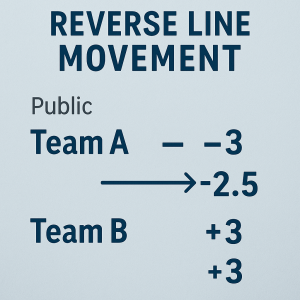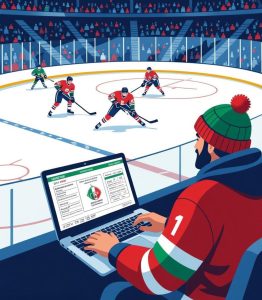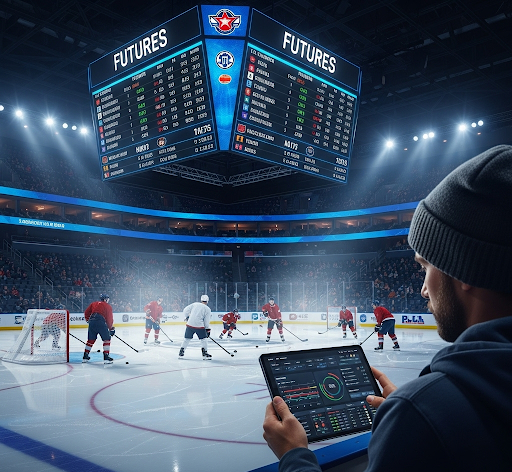
In the UK, hockey enthusiasts use more digital methods to pursue their gaming and betting interests. UK players review and rank online casino sites before deciding to go with one.
For all the benefits these offshore options provide in community participation and betting opportunities, hockey fans need to know the many intricacies of these sites, the risks involved, and the value added to the betting experience before signing up.
How Offshore Sites Work
Overseas casino sites for UK players have no UK regulation and consequently no UK compliance.
There are many other sites around the world, and the lack of regulation means that the standards governing UK domain sites do not apply to offshore sites.
This doesn’t mean they’re all unsafe, but users must be more careful when choosing sites.
There are parameters for acceptable off-shard sites, which are upheld internationally. End users have the right to and should negotiate rules for each of the games in which they participate.
There should be value added to the betting experience, and responsible gaming controls should be in place.
Usual Players and Review Sites can offer helpful advice when evaluating offshore sites. Reviews offer observations regarding reliability and other user concerns.
At the end of the day, the above suggestions can help provide the right site for the end user.
Evaluating Government Betting Coverage and Data
When it comes to government and social policy and related betting data, considering the betting data and the markets available is key.
Offshore platforms vary significantly in their coverage, and the breadth of available betting markets is key.
Access to data is critical at the moment and is available in real-time for various markets throughout the betting process, which can enhance the user experience.
Potential customers must assess several factors, including the coverage of the betting markets, the history of the offshore platforms, the variety of markets available, the performance of live betting and esports betting, the current capital flow, and the historical trends of offshore betting markets.
The breadth of available betting markets is an indicator of the operator’s dedication to quality data.
ALSO READ: Maximizing Profits: Using Live Scores to Inform Hockey Betting Decisions
Evaluating User Experience and Mobile Functionality
Current social policy users prioritize functionality and a seamless user experience. User experience and streamlined betting dashboards can create value, particularly through offshore user experiences.
The evaluation of the ability to integrate the betting function with a streamlined user experience is conducted in a preview mode, rather than using real cash, on the platform.
While tracking live social policy betting, efficient dashboards and customized user interfaces create value.
Flexibility of Payment and Support of Reliability
The versatility of payment methods and transaction speed is yet another advantage of these offshore payment platforms.
These offshore payment platforms offer a combination of traditional and modern payment methods, such as e-wallets and cryptocurrency, to expedite transactions.
However, users should investigate withdrawal policies, processing times, minimums, and other particulars to ensure no problems arise.
The other major factor is reliable customer support. A provider with 24/7 live chat, email ticketing systems, and self-help support documentation indicates strong customer relationships and communication that will be useful during potential disputes or technical problems.
Final Thoughts
For UK hockey fans, an offshore casino site opens up great markets, innovative bet types, and exciting technology.
With a bit of effort and focus on research and assessment of coverage, usability, and reliability, fans will be able to pinpoint platforms that reflect their passion for the sport while offering safe, responsible gaming.



 Sports betting lines move for a reason. Most of the time, it’s because oddsmakers are reacting to where the public money is going. If most people are betting on one side, the line shifts to balance action and limit risk for the sportsbook. But sometimes the line moves in the opposite direction from
Sports betting lines move for a reason. Most of the time, it’s because oddsmakers are reacting to where the public money is going. If most people are betting on one side, the line shifts to balance action and limit risk for the sportsbook. But sometimes the line moves in the opposite direction from Thousands of Italian hockey fans who once stepped away from betting are now finding ways to return safely to the game they love. International leagues like the NHL and European championships have never been more accessible, with live streams and real-time odds just a tap away. For those who have decided to rejoin the action after a pause, knowledge and discipline are the key allies.
Thousands of Italian hockey fans who once stepped away from betting are now finding ways to return safely to the game they love. International leagues like the NHL and European championships have never been more accessible, with live streams and real-time odds just a tap away. For those who have decided to rejoin the action after a pause, knowledge and discipline are the key allies.
